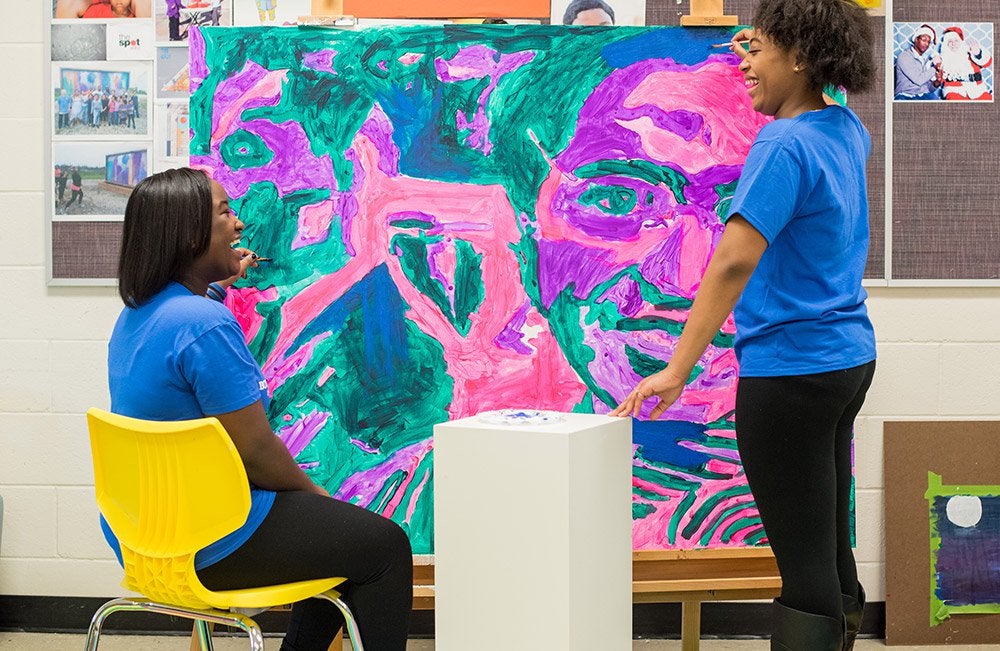The Every Student Succeeds Act (ESSA) of 2015 makes considerable funding available to state and local education agencies for a variety of activities, including arts education. To make use of this funding, however, agencies must show evidence that the activities they propose make—or could reasonably make—a difference in student outcomes.
Researchers from the American Institutes for Research recently released a detailed Wallace-commissioned report that points to 88 studies of arts education approaches that meet ESSA's standards of evidence. Their report also includes a broader estimate, based on available evidence, of the results policymakers might see when undertaking certain types of arts education activities.
Wallace's editorial team talked to the authors of the report—Yinmei Wan, Meredith Ludwig and Andrea Boyle—to discuss the funding programs in ESSA, the activities and approaches that qualify for these programs, the results arts-education interventions could yield and how educators could use their report to improve arts education in their schools.
The report identifies 12 ESSA funding programs that agencies could use for arts education. "Some funding programs are particular to specific activities," said Boyle. "For example, if you want to open an arts-focused magnet school, there is a program specifically for that."
Others such as the Title I program, which offers funds to help improve certain schools, can be used to support a range of activities, Boyle added. "But they might focus on specific populations, such as English learners or students of low income backgrounds, or on certain types of settings, such as extended days or afterschool programs," she said. "If you focus on those student groups or activities, then that might be the sort of program you would want to pursue."
Approaches that meet the evidence requirements for these funding programs cover a range of art forms, including dance, drama, and media arts. Most, however, focus on music and visual arts. “There is a lot more research literature about music and visual arts”, said Meredith Ludwig, "because those are the dominant programs available to students in schools."
ESSA splits evidence into four tiers. Tiers I, II and III require positive, statistically significant results for an arts education intervention to qualify for ESSA. Most of the eligible approaches mentioned in the report fall under Tier IV, which requires a theoretical or research-based rationale suggesting that an intervention islikely todeliver a positive result.
"The Tier IV evidence category allows for opportunities to innovate with new interventions or new approaches that don't quite have a research base yet," said Boyle. "It requires an intervention to have a rationale or logic model explaining how the intervention is expected to work, paired with efforts to evaluate what effects the intervention actually has once it is put into practice. To come up with a logic model, you can look at interventions that do have evidence behind them, what their logic model might be, and develop a rationale informed by that."
A previous ESSA study could help inform such efforts, Ludwig said. "The RAND report on social and emotional learning did a good job describing how Tier IV is a good jumping off point for further research," she said. "It's important to explore what you know about a Tier IV intervention, whether you need to make changes to it and how you might bring the level of evidence up."
Different ESSA funding programs have different requirements, however. When matching a desired activity to a potential funding program, educators must ensure that the activity meets the evidence standards for that program. "Read the fine print of the specific funding program you're going after," said Boyle. "And make sure that the evidence aligns with those requirements."
Ultimately, the authors suggest, educators must ensure that the interventions they choose fit their broader goals for their schools. "Think about where an arts program would stand in relation to other things the school might be doing," Boyle said. "Look at the other types of funding available, what your priorities might be and how arts education might fit into those priorities."
The report's authors also explored the potential efficacy of arts education efforts beyond ESSA's evidence requirements. The final chapter of the report is a meta-analysis of all empirical studies the researchers found, regardless of whether they found the positive results that would make activities eligible for ESSA.
“We examined all of the effects produced from well-designed and well-implemented studies, regardless of whether they provide positive or negative findings, or whether the findings are statistically significant or not,” said Yinmei Wan, lead author of the report. “We think it can provide more important information for policymakers that takes account of the magnitude and direction of the effects in all the studies.”
The meta-analysis found that arts education produces a moderate, statistically significant, positive effect on student outcomes. But Wan urges caution when interpreting its results, largely because of the dearth of empirical research about arts education.“For some art types and outcome domains, there is only one single study,” she said.
She also points to the difficulties inherent in measuring the entirety of the arts experience. “Researchers are trying to find ways to better measure features of the arts experience," she said.
Still, there are many studies that could help point educators in the right direction. "Our review has limited scope," Wan said. "We don't review international studies or studies about afterschool programs. But there are other resources available like the What Works Clearinghouse or artsedsearch.org that have more information about interventions that are not covered in the report."


